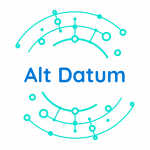Docker
Building Your 1st Application in Kubernetes: An Overview
Kubernetes is a effective container orchestrator and has been setting up itself as IT architects’ container orchestrator of decision. But Kubernetes’ electric power will come at a value leaping into the cockpit of a state-of-the-artwork jet puts a good deal of electrical power underneath you, but realizing how to really fly it is not so very simple. That complexity can overwhelm a whole lot of people today approaching the system for the initially time.
I wrote a site sequence a short while ago where by I stroll you by way of the fundamental principles of architecting an application for Kubernetes, with a tactical aim on the true Kubernetes objects you are going to want. The posts go into really a bit of depth, so I have delivered an abbreviated variation below, with one-way links to the initial posts.
Just Enough Kube
With a machine as effective as Kubernetes, I like to recognize the complete least set of points we’ll want to realize in order to be successful there’ll be time to learn about all the other bells and whistles one more working day, after we master the main ideas. No subject exactly where your application operates, in Kubernetes or anyplace else, there are four problems we are heading to have to address:
- Processes: In Kubernetes, that suggests using pods and controllers to program, keep and scale processes.
- Networking: Kubernetes providers permit software elements to speak to every other.
- Configuration: A very well-penned software elements out configuration, rather than hard-coding it. In Kubernetes, volumes and configMaps are our resources for this.
- Storage: Containers are small-lived, so information you want to retain need to be stored somewhere else. For this, we’ll appear at Container Storage Interface plugins and persistentVolumes.
Just Ample Design and style
There are some substantial-degree layout points we want so we can fully grasp the engineering choices that abide by, and to make confident we’re acquiring the highest benefit out of our containerization platform. No matter of what orchestrator we’re employing, there are 3 vital rules we need to have to maintain in thoughts that set a regular for what we’re hoping to realize when containerizing programs: portability, scalability, and shareability. Containerization is basically intended to confer these advantages to purposes if at any time when you’re containerizing an application and you are not observing returns in these 3 spots, something may perhaps well need to have to be rethought.
For extra facts on Kubernetes and where by to begin when applying them to establish an software, check out out Portion 1 of our series.
The coronary heart of any software is its operating processes, and in Kubernetes, we generate procedures as pods, which are made use of to program teams of unique containers. Pods are a bit fancier than specific containers, in that they can plan entire teams of containers, co-positioned on a solitary host, which delivers us to our initial determination level — How really should our procedures be arranged into pods?

There are two critical criteria for how we set up pods:
Pods and containers have to scale with each other. If you have to have to scale your software up, you have to increase more pods these pods will appear with copies of each container they involve.
Kubernetes controllers are the best way to agenda pods, since controllers like deployments or daemonSets provide quite a few operational tools for scaling and maintenance of workloads past what’s available by bare pods.
To master far more about setting up processes for handling your apps, look at out Portion 2 of our sequence.
After deploying workloads as pods managed by controllers, you have to build a way for people pods to reliably connect with each individual other with no incurring a good deal of complexity for developers.
That’s where by Kubernetes products and services come in. They provide reliable, easy networking endpoints for routing visitors to pods via the set metadata described in the controller that developed them. For simple apps, two providers protect most use circumstances: clusterIP and nodePort expert services. That delivers us to a different choice place: What sort of services should route to just about every controller?
The most basic way to determine among them is to ascertain no matter if the focus on pods are intended to be reachable from outdoors the cluster or not.
- A Kubernetes nodePort support enables exterior website traffic to be routed to the pods
- A Kubernetes clusterIP services only accepts visitors from within the cluster.
You can understand additional about conversation through Kubernetes solutions and how to make a decision concerning clusterIP and nodePort providers in Aspect 3 of our collection.
One particular of the main style ideas of any containerized app is portability. When you construct an software with Kubernetes, you are going to want to deal with any troubles with the environment-specific configuration envisioned by that app.
A perfectly-created application ought to treat configuration like an impartial object — separate from the containers them selves and provisioned to them at runtime. When we style applications, we will need to establish what configurations we want to make pluggable in this way — which delivers us to one more choice point:
What application configurations will need to alter from environment to surroundings?
Typically, these will be surroundings variables or config documents that alter from natural environment to surroundings, this kind of as accessibility tokens for distinctive services employed in staging vs . production or different port configurations.
The moment we’ve recognized the configs in our software that need to be pluggable, we can enable the actions we want by making use of Kubernetes’ method of volumes and configMaps.
You can read far more about configuration in Part 4 of the sequence.
The ultimate ingredient we want to believe about when we construct apps for Kubernetes is storage. Remember, a container’s filesystem is transient, and any data saved there is at hazard of currently being deleted along with your container if that container ever exits or is rescheduled.
Any container that generates or collects valuable knowledge really should be pushing that details out to steady exterior storage conversely, any container that demands the provisioning of a lot of facts need to be acquiring that information from an external storage site.
Which brings us to our last conclusion point: What facts does your software collect or use that should really stay longer than the lifecycle of a pod?
Tackling that involves doing work with the Kubernetes storage product. The whole design has a quantity of transferring parts: The Container Storage Interface (CSI) Plugins, StorageClass, PersistentVolumes (PV), PersistentVolumeClaims (PVC), and Volumes.

To study extra about how to leverage the Kubernetes storage design for your apps, be confident to examine out Component 5 of the collection.
The Long run
I’ve walked you by means of the simple Kubernetes tooling you’ll need to containerize a huge variety of applications, and offered you with upcoming-phase tips on exactly where to search for extra superior details. Consider doing work as a result of the phases of containerizing workloads, networking them alongside one another, modularizing their config, and provisioning them with storage to get fluent with the tips over.
Just after mastering the fundamentals of constructing a Kubernetes software, check with by yourself, “How properly does this application suit the values of portability, scalability and shareability we commenced with?” Containers themselves are engineered to quickly go involving clusters and users, but what about the total application you just created? How can we shift that all around whilst continue to preserving its integrity and not invalidating any unit and integration screening you’ll carry out on it?
Docker App sets out to solve that challenge by packaging programs in an integrated bundle that can be moved around as conveniently as a single graphic. Keep tuned to Docker’s blog for more advice on how to use this rising structure with your Kubernetes purposes.
To master a lot more about Kubernetes and Docker:
We will also be featuring teaching on Kubernetes starting up in early 2020. In the schooling, we’ll present additional unique examples and fingers on workouts.To get notified when the teaching is accessible, sign up below:



